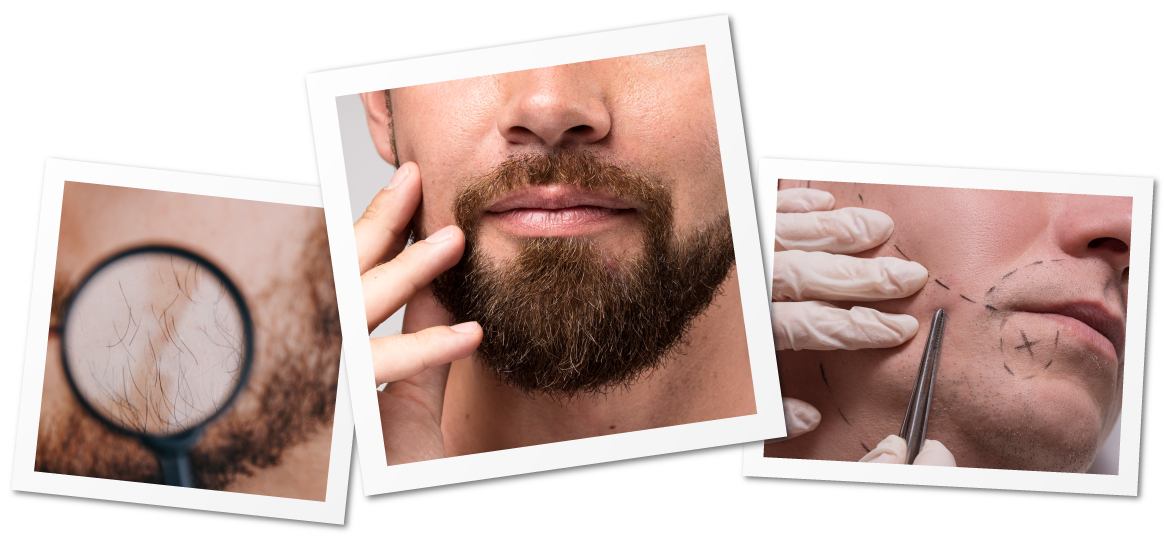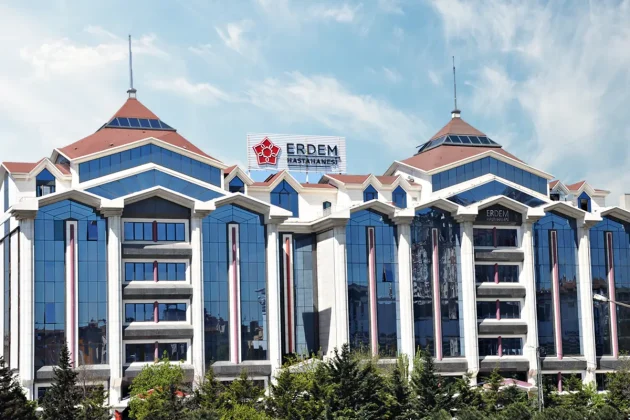
Beard Transplant in Turkey
What is Beard Transplant?
Under typical circumstances, beards should fully emerge between puberty and age twenty-five and contribute to the more aesthetically pleasing aspect of male facial features. The whole beard development is finished in healthy, genetically predisposed individuals by the start of their thirties. How much, how, and at what density the beard grows depends on a variety of circumstances. The key determinants include the person's eating habits, metabolic condition, genetic make-up, and the shaving apparatus he uses.
Beard Loss Factors
The traits of the area where the hair follicle develops, in addition to genetics, are the main cause of this. All over the body, but particularly the face, hair can be affected by diseases and issues. The quantity, density, angle, and symmetry of the beard can all change depending on these issues. The major causes of beard loss include wounds, burns, blows, and the existence of beard-breaking diseases.
Why Beard Transplant?
It is possible to say that men with dense beards look more handsome within today's aesthetic understandings. With beard growth becoming fashionable, those whose beards are not dense or worse; those who experience regional beard loss due to some factors are under psychological pressure. The boundaries of plastic surgery in terms of aesthetics are fairly broad. Regardless of the reason, it is possible to eliminate these beard problems with beard transplant applications.
How is Beard Transplant Performed?
Beard density is different for each patient. Therefore, the area to be planted is determined by the specialist with a different planning. For beard transplantation, the patient's condition is evaluated depending on the drawings to be made on the patient's face, and the hair follicles taken from the nape area are separated and transferred to the beard area. Although there are two known hair transplantation methods in beard transplantation, the FUT technique is not preferred much today. Instead, with the "Follicular Unit Extraction" technique, which uses the developing technology and known by the abbreviation FUE, hair transplantation can be done without opening the incision. With the FUE technique, the hair follicles taken from a hairy part of the body are removed one by one in beard transplantation. These hair follicles are then placed in the channels opened in the hairless area of the beard region. After the hair transplant procedure, which is completed in a few hours with local anesthesia, the patient does not feel any pain.
Things to Consider During Beard Transplant
As with many aesthetic and cosmetic procedures, there are issues to be considered before and after beard transplantation. Before beard transplantation, blood thinners should be discontinued at least a week or two before. If you need to use this type of medicine regularly, you should definitely share it with your doctor. Additionally, it is advised to stop drinking and smoking at least three days prior to the procedure. The substances in these products cause a delay in healing. It is important for the procedure that the area where the hair follicle will be taken is not irritated, there is no wound and there are enough hair follicles. Since it is a surgical procedure, beard transplantation is carried out by a specialist doctor, minimizing the problems that may be encountered in the future.
Is Beard Transplantation Performed on Burns and Scars?
Existing scars can be hidden by adding hair follicles taken from any part of the body to the non-bearded scar. In beard transplantation with hair root transplantation, the hair roots create a harmonious appearance to the face area after shaving. Under normal conditions, growing the beard around the wound does not completely cover the scar.
Post-Operation Process
After beard transplantation, the patient can return to his/her daily life within a few hours as there will be no pain after beard transplant. In the first days, it is normal to develop redness and acne in the treated area. This will end in a few days.
Since the roots are newly planted, the face area should not be touched too much; movements such as scratching, touching, or drying hard should not be done. It is forbidden to water the beard planting area for three days. The creams and lotions recommended by the doctor should be used regularly and the beard should not be shaved until the doctor's permission. New beards begin to appear between the fourth and sixth months and the process will be completed within a year.

Beard Transplant Process
Anesthesia
Duration of treatment
Stay in Istanbul
Socially acceptable
Beard Transplant in Turkey FAQ
Once the hair transplant is finished and growth has started, the hair is permanent. When a skillful surgeon performs the treatment, patients can anticipate that 90% of their transplanted hair transplants would survive and thrive.
Beard transplants are the most efficient approach to stimulate facial hair growth. Your own hair is used to provide realistic effects.
You'll be glad to know that a beard transplant is completely painless. Since it only affects certain hairs and follicles, recovery time is rather quick, and you will initially receive a local anesthetic to ease any discomfort.
We advise waiting at least 10 days after a beard transplant before shaving. The first few times, you'll need to be really gentle because your face can initially be red, uncomfortable, or swollen.
Both a FUE and a FUT beard transplant may result in some scarring in the donor area.
You can sleep whenever you wish without worrying about upsetting the grafts as long as all of the crusts have been removed for at least 4 days.
Why Choose Us?
First of all, we provide state-of-the-art and meticulous health services with our “health first” understanding.
You have the chance to call our customer service at any time and ask whatever you want.
You are in safe hands thanks to our successful doctors and healthcare professionals.
No matter where you come from in the world, you will feel at home.
We not only provide health services to our patients but also offer transportation and accommodation options for them.
A chance to take advantage of opportunities thanks to our affordable prices and advantageous packages.
Contact MEK Health
Get in touch for
free consultation
Contact MEK Health for access to cutting-edge healthcare technology, answers to your queries, and effective treatments
 Application Process
Application Process

After completing the form, MEK Health employees will contact you immediately and provide guidance in line with your needs.
After informing our employees about the field you want to be treated, you will have the right to a free consultation by Turkey's most experienced doctors.
Our employees will complete the processes such as the date you want to come, visa procedures, VIP transfer, accommodation etc. for you.
When you land in Istanbul, you will be picked up by VIP transfer and then you will stay in our 5-star partner hotels that we have arranged for you. In addition, you will achieve the health you want thanks to the experienced doctors and healthcare professionals in the full-fledged hospitals we partner with.
Our Facilities and Services
The services and facilities we offer to help you at every stage of your treatment.

